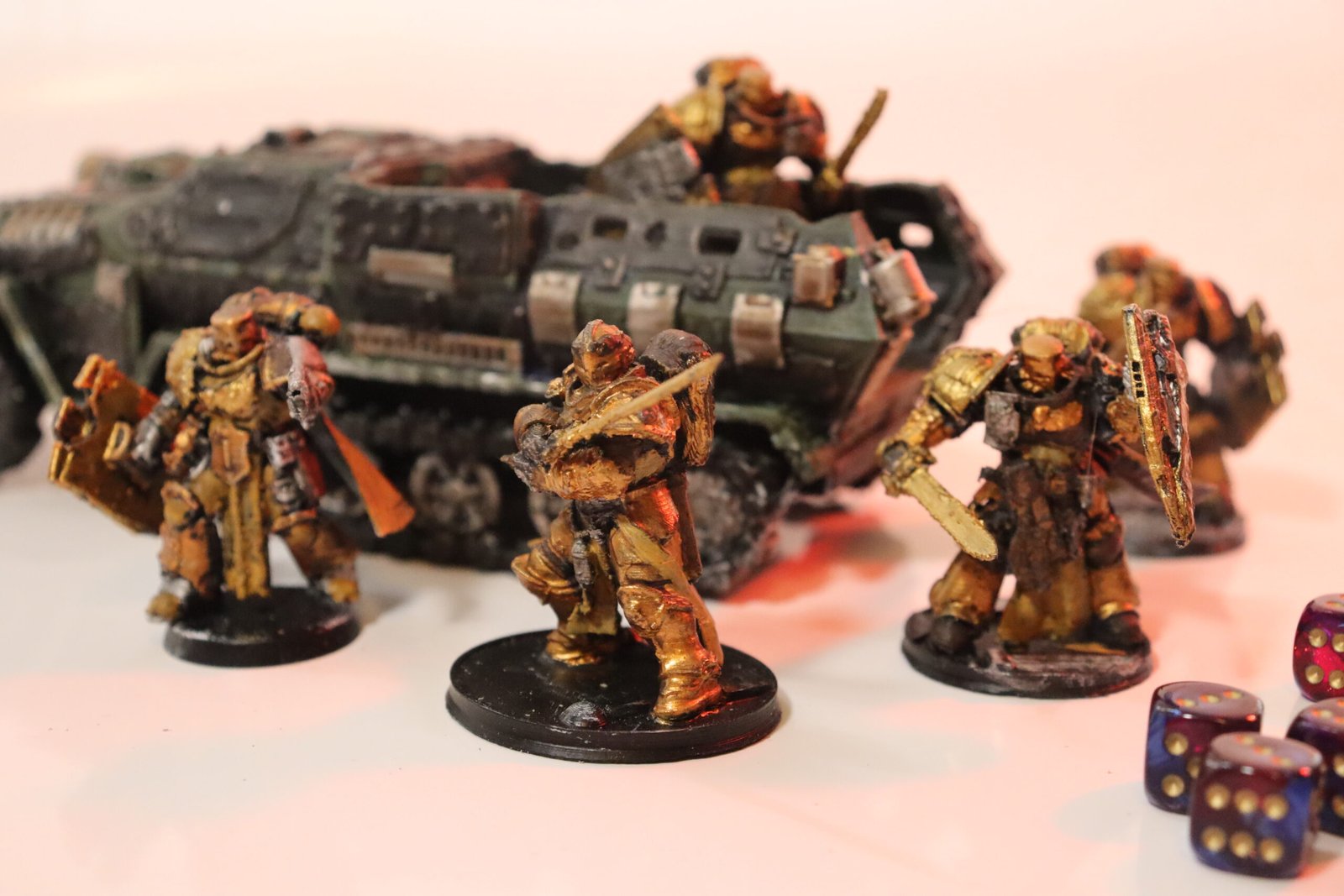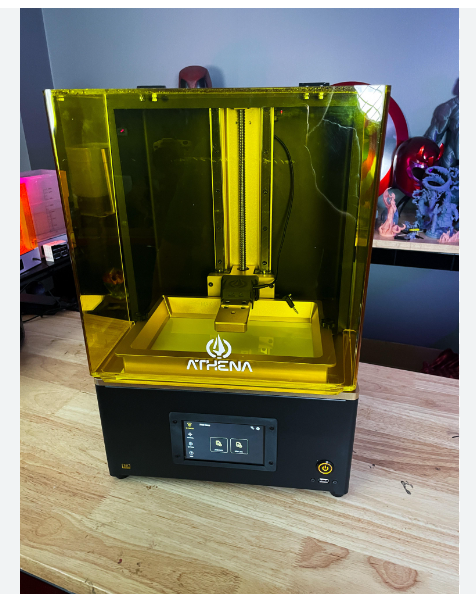3D Printing Miniatures on a budget
Affiliate Disclosure: Minicrafthub.com is a participant in an affiliate advertising program designed to provide a means for us to earn fees by our links to affiliated sites. When you purchase through our affiliate links, we may earn a commission at no extra cost to you. Your support helps us continue providing valuable content. Thank you!

Disclaimer
What you read is information that comes from either the writer’s experience or their research. We do not call ourselves experts and if you wish to learn more on this topic we highly recommend it.
Why 3D Printing
Whether you’re building an army for the table or gathering figures for the next session can be hard when you’re on a small income. Here we discuss the pros and cons of getting a 3D printer to solve this dilemma.
That is why I recommend 3D Printing your miniatures, even if you are one on a low budget. Instead of spending all that money on overpriced figures, you can buy a printer, creating as many figures as you need. The only limitation is how much effort you spend.
More Information
I have the Ender 3 v2 filament printer. Ender 3 is a good budget-friendly printer for beginners. It will require you to manually level the bed. Downside the cheaper parts and those parts that need to be replaced.
The ANYCUBIC M5s Pro Resin Printer is a decent starting printer with different sizes depending on your budget.
Basics of Printers
Let’s get the overall basics out of the way. There are two different printer types Resin and Filament Printers. Both have their strengths and weaknesses and at the end of the day, it is all about what you want or need.
TYps of printers
In case you don’t know what each printer is, Resin uses a liquid resin to create and print its objects while a filament printer uses a roll of filament and spits the plastic out through a heated end.
- Overall Prose of a Resin Printer – Prints fine Detailed Items (miniatures, jewelry, machined parts) Less Visible Layer Lines.
- Cons of Resin – Smaller Build Volume, and Struggles to Fit Larger Objects.
- Overall Prose of a Filament Printers – Larger Build Volume, Prints Bigger Objects (terrain, props, cosplay items)
- Cons of Filament – More Visible Layer Lines, Longer Print Times.
Recommended Uses of the Printers – Filament printers are recommended to be used when dealing with props, tools, or big objects. Being that you can sand or use the object right off the printer. Resin on the other hand seems to be built for miniature printing. It has a small base and can give you a clean print once you cure it.

What is the budget-friendly Type of Printer?
To the point – Filament Printers (FDM)


And Why Filament?
Since resin is toxic, you will need a well-ventilated space, gear to handle the print, and machines to cure the prints, which are another hundred dollars. While Filament is one machine, and the rest is skill and love.
Yes you can get better quality doing Resin Printing. Yet it is more expensive if money is not a concern. Compared to the filament where the quality is to be desired you will have some more often failed prints. But prep time and budget-wise, FDM is where to be.
Quality?
You don’t have to worry about getting another machine, you might need to fill in some gaps. Also, you can use the figure straight off the printer. After filling in some gaps and priming it you can paint it easily. But I will not lie, there are cases where the figure will have an extra filament that needs to be sanded down.
- If you are not a picky person, having an arm or leg fail the print can be used for creativity, making your figure more unique. For example, my orc warboss finger came off, I put it back on and painted it rustic. To give the idea that his finger was welded back on. Which is kinda what happened.
Other Guides

Top 10 Supplies for Your Hobby Arsenal
Embarking on a wargaming journey is thrilling, but having the right tools can make the difference between a good experience and a great one.

Wargaming on a Budget
Diving into the captivating world of wargaming doesn’t have to break the bank. Here are some savvy tips for wargaming on a budget without compromising on the fun or creativity.

40K RULEBOOK BREAKDOWN
Embark on an immersive journey into the dystopian tapestry of 40k, where the fate of galaxies hangs in the balance. Whether you’re a neophyte or a seasoned commander, this guide offers a detailed roadmap for navigating the complexities of the grim darkness of the far future.

PAINTING MINIATURES 101
Welcome to the enchanting realm of miniature painting, where the strokes of your brush breathe life into tiny warriors, wizards, and creatures. This tutorial will guide you through the intricate process of transforming plain models into captivating works of art. Let the creativity flow and your miniatures come to life!
Moving forward
- If you want to know more about resin printers I recommend looking for a different article or video on the topic.
Programs and websites
I recommend you use Cura, it is free and easy to use if not a small learning curve. There are many websites to choose from, but in general, you will be surprised what files are free.
Thingiverse.com is the go-to place to find free 3D print files. Next would be Myminifactory.com, where you will find paid and free files. The website has many genres, but it mainly focuses on figures. Those are just two of the many websites to get you started, it all depends on your budget and wants.

process of filament miniature printing
There is only so much I can describe for each step. Assuming you have your printer set up, find an army list or list of miniatures you want to print. Next, you will search for those figures on the websites described above. Note, sometimes you might not be able to find the miniatures you want.
Next, you will open that file to Cura and see if it is the size needed, generally 40K figures are 28mm. Make sure the object’s settings are in millimeters. Up next is printing the miniature, you will most likely fail on the first try, so do not walk away from the printer. Stop the printer and see if the bed is level or is not sticking. Once you figure that out relevel it or find a glue stick and spread it on the bed, it will help the filament to stick. Try again, and again.
A few hours later place the bed in the freezer to pop the figure off it. Then snip the supports off, and sand all the unwanted filament. After that, you prep the miniature. Use Epoxy or Polyurethane, I recommend Polyurethane because it is then and can fill in small gaps. After you sand, you can skip this step, but you might end up with a few unwanted filaments.

The next step is priming, as all wargamers know. You can easily find primer at your hardware store but consider that filler primer will fill those small details on your miniature so use a regular primer instead. After that, it is painting the figure with Citadel paints, or if you can’t spend the extra bucks buy Apple Barrel paints. They aren’t as reach if you used Citadel but they will serve your purposes.
Printers

I have the Ender 3 v2 filament printer. Ender 3 is a good budget-friendly printer for beginners. It will require you to manually level the bed. Downside the cheaper parts and those parts that need to be replaced.
There are so many printers to choose from, but here are two top beginner options.

The ANYCUBIC M5s Pro Resin Printer is a decent starting printer with different sizes depending on your budget.

Top 10 Supplies for Your Hobby Arsenal
Embarking on a wargaming journey is thrilling, but having the right tools can make the difference between a good experience and a great one.

Wargaming on a Budget
Diving into the captivating world of wargaming doesn’t have to break the bank. Here are some savvy tips for wargaming on a budget without compromising on the fun or creativity.

40K RULEBOOK BREAKDOWN
Embark on an immersive journey into the dystopian tapestry of 40k, where the fate of galaxies hangs in the balance. Whether you’re a neophyte or a seasoned commander, this guide offers a detailed roadmap for navigating the complexities of the grim darkness of the far future.

PAINTING MINIATURES 101
Welcome to the enchanting realm of miniature painting, where the strokes of your brush breathe life into tiny warriors, wizards, and creatures. This tutorial will guide you through the intricate process of transforming plain models into captivating works of art. Let the creativity flow and your miniatures come to life!

